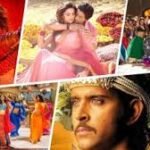In a landmark move to modernize travel and tighten security, India has officially rolled out e-passports—a tech-forward upgrade from the traditional paper passports. These new passports come embedded with electronic chips that carry your personal and biometric data, promising not just faster airport clearance, but also enhanced safety and global recognition.
What Exactly Is an E-Passport?
Think of the e-passport as your regular passport—but smarter. Hidden inside the cover is a tiny RFID chip that securely holds all your key details—name, date of birth, photograph, passport number, and biometric data like fingerprints. This means immigration officers around the world can quickly verify your identity and confirm that the document hasn’t been tampered with.
These passports meet international standards set by the International Civil Aviation Organization (ICAO), putting Indian travelers on par with citizens of over 120 countries that already use similar technology.
Why This Matters
The launch of e-passports is more than just a tech upgrade—it’s about streamlining how India travels and doing it safely. Here’s what travelers can expect:
-
Stronger Security: The encrypted chip makes forgery nearly impossible. Identity theft becomes much harder with the secure biometric data encoded directly into the passport.
-
Faster Airport Clearance: Airports equipped with e-gates will be able to scan these passports swiftly, reducing long queues and making international travel smoother.
-
Globally Recognized: Because e-passports meet global standards, they are easier to use across borders, minimizing issues with international verification and entry procedures.
-
Tamper-Resistant: Any attempt to modify or clone an e-passport will be easily detectable due to its secure digital signature and data integrity protocols.
Where Is It Available?
As of now, e-passports are being issued in 13 cities including Delhi, Goa, Chennai, Hyderabad, Jaipur, and Amritsar. The program kicked off with a pilot phase in 2024, and by mid-2025, it’s expected to cover the entire country. The passports are being printed at the India Security Press in Nashik, which has been upgraded with state-of-the-art technology for this purpose.
How to Apply
Getting an e-passport is quite straightforward:
-
Apply online at the Passport Seva Portal.
-
Schedule an appointment at your nearest Passport Seva Kendra (PSK) or Post Office Passport Seva Kendra (POPSK).
-
Visit in person, submit your documents, and provide biometric data.
-
After processing, your e-passport will be printed and delivered to your doorstep.
If you already have a valid passport, don’t worry—you don’t need to replace it right away. You’ll receive the new e-passport format automatically the next time you renew.
What Does This Mean for Travelers?
For frequent flyers, this is great news. With countries tightening border controls and speeding up airport processes, e-passports are the future. For India, it’s a proud step forward—matching strides with the world’s leading travel systems while keeping its citizens’ identity secure.
As more global destinations begin recognizing and preferring biometric documents, Indian travelers will find themselves better equipped and more welcome than ever before.
The launch of e-passports marks a new era for Indian citizens—a blend of convenience, security, and international compatibility. It’s a clear message: India is ready for a smarter, more secure future in global travel.










